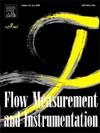Multi-source natural gas calorific value prediction model based on T-pipe analysis and response surface methodology
IF 2.3
3区 工程技术
Q2 ENGINEERING, MECHANICAL
引用次数: 0
Abstract
In the rapid development of the natural gas industry, it is important to achieve accurate and reliable prediction of natural gas calorific value (NGCV). With the formation of a multi-source gas supply, various parameters of natural gas flow will undergo changes, which can affect the acquisition of NGCV. Therefore, this paper establishes a T-pipe model of a multi-source mixed-transmission to analyze the influencing factors of NGCV. It explores the relationship between the mixing of natural gas from multiple sources, gas supply volume, pipe diameter, and other factors, and determine the position where the multi-source natural gas is uniformly mixed in the T-pipe. Additionally, a calorific value prediction model based on response surface (RSCVP-model) is proposed. The uncertainty of the model ranges from 0.18 % to 0.253 %, validating the accuracy and applicability of the model and providing reference for the prediction of NGCV.
基于t管分析和响应面法的多源天然气热值预测模型
在天然气工业快速发展的今天,准确可靠地预测天然气热值(NGCV)显得尤为重要。随着多气源气源的形成,天然气流的各种参数会发生变化,从而影响天然气热值的获取。因此,本文建立了一个多气源混输的 T 型管道模型,以分析 NGCV 的影响因素。它探讨了多气源天然气混合、供气量、管道直径等因素之间的关系,并确定了多气源天然气在 T 型管道中均匀混合的位置。此外,还提出了基于响应面的热值预测模型(RSCVP 模型)。模型的不确定性在 0.18 % 到 0.253 % 之间,验证了模型的准确性和适用性,为预测 NGCV 提供了参考。
本文章由计算机程序翻译,如有差异,请以英文原文为准。
求助全文
约1分钟内获得全文
求助全文
来源期刊

Flow Measurement and Instrumentation
工程技术-工程:机械
CiteScore
4.30
自引率
13.60%
发文量
123
审稿时长
6 months
期刊介绍:
Flow Measurement and Instrumentation is dedicated to disseminating the latest research results on all aspects of flow measurement, in both closed conduits and open channels. The design of flow measurement systems involves a wide variety of multidisciplinary activities including modelling the flow sensor, the fluid flow and the sensor/fluid interactions through the use of computation techniques; the development of advanced transducer systems and their associated signal processing and the laboratory and field assessment of the overall system under ideal and disturbed conditions.
FMI is the essential forum for critical information exchange, and contributions are particularly encouraged in the following areas of interest:
Modelling: the application of mathematical and computational modelling to the interaction of fluid dynamics with flowmeters, including flowmeter behaviour, improved flowmeter design and installation problems. Application of CAD/CAE techniques to flowmeter modelling are eligible.
Design and development: the detailed design of the flowmeter head and/or signal processing aspects of novel flowmeters. Emphasis is given to papers identifying new sensor configurations, multisensor flow measurement systems, non-intrusive flow metering techniques and the application of microelectronic techniques in smart or intelligent systems.
Calibration techniques: including descriptions of new or existing calibration facilities and techniques, calibration data from different flowmeter types, and calibration intercomparison data from different laboratories.
Installation effect data: dealing with the effects of non-ideal flow conditions on flowmeters. Papers combining a theoretical understanding of flowmeter behaviour with experimental work are particularly welcome.
 求助内容:
求助内容: 应助结果提醒方式:
应助结果提醒方式:


